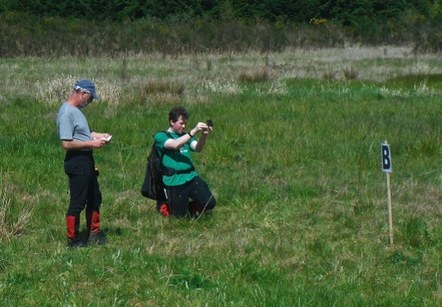Olympia Navigation Committee
course
This course consists of map and compass instruction, GPS/Gaia/CalTopo instruction, an in-person workshop, and an all day field trip.
Students will learn about maps, compass use, coordinate systems, terrain association, and route planning. The course uses "Wilderness Navigation" by Burns and Burns.
This course is held annually during the months of April and May.
Pre-course requirements
- Purchase an approved compass (approximately $50-70). See below for details.
- Read "Wilderness Navigation" by Burns and Burns.
Course completion requirements
- Attend all in-person lectures.
- Attend a field day with exercises.
- Pass online test with sufficient score.
Compass requirements
This course requires a high-quality compass, purchased before and brought to the first class. The Olympia Mountaineers does not have suitable compasses to loan for the class. The compass you bring to use MUST have the following features:
- Adjustable declination. Some compasses are sold with "declination scale," which means the declination is NOT adjustable. If you have a question at the store, ask the salesperson to show you how to adjust the declination. If you can't adjust for declination, don't buy the compass.
- A transparent, rectangular base plate. You'll need the transparency and the straight edges for plotting and triangulating on the map.
- Degrees in 2-degree increments and marked from 0 to 360°. You’ll need the accuracy of the 2-degree increments. Some compasses, called "quadrant," are marked 0-90° four times around the bezel. Do not buy a "quadrant" compass.
- Meridian lines. These lines are marked on the bottom of the rotating housing, line up to north on the scale, and rotate with the housing. These lines are how you use the compass with a map.
Additional, useful features include
- A sighting mirror. Nothing improves the accuracy of your compass work like having and learning to use a sighting mirror.
- Large baseplate. Three to four inches is normal. Less than that is not very useful for straightedge work on the map.
- Ruler and/or gradient scale. Usually engraved on the baseplate edge.
- Clinometer. This swinging arrow allows you to estimate slope angle and calculate heights (with a little geometry).
- Luminous points. This is handy in the dark or dim.
Acceptable Models
Expect to spend around $50-70. You do not need a "global" compass for this class – these cost more – though you may need one if you plan to use it for navigation in the southern hemisphere, where your northern-balanced needle will drag and not spin freely.
Many are available from local retailers. Be careful, however, as not all salespeople are knowledgeable about compasses and may try to sell you a compass that you won't be able to use.
The following models meet the requirements above:
- Silva Ranger 2.0
- Suunto Navigator MC-2
- K&R Alpin and Sherpa BW2
- Brunton Truarc 15 (The “tool-free” declination adjustment on Brunton compasses is difficult to operate.)
The following retailers may be able sell you the recommended compasses:
